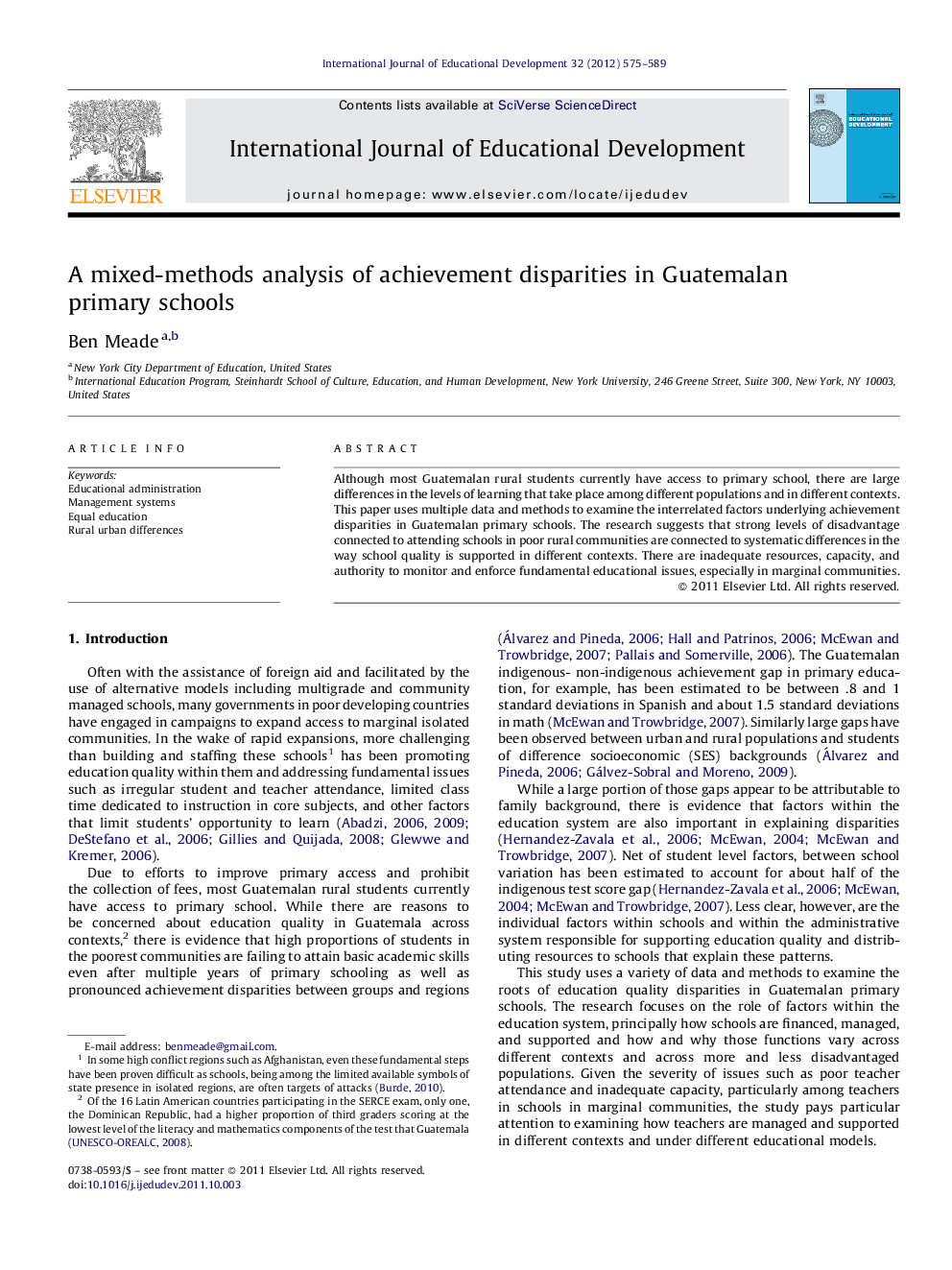| Article ID | Journal | Published Year | Pages | File Type |
|---|---|---|---|---|
| 356138 | International Journal of Educational Development | 2012 | 15 Pages |
Although most Guatemalan rural students currently have access to primary school, there are large differences in the levels of learning that take place among different populations and in different contexts. This paper uses multiple data and methods to examine the interrelated factors underlying achievement disparities in Guatemalan primary schools. The research suggests that strong levels of disadvantage connected to attending schools in poor rural communities are connected to systematic differences in the way school quality is supported in different contexts. There are inadequate resources, capacity, and authority to monitor and enforce fundamental educational issues, especially in marginal communities.
► Analysis reveals that non-traditional school types designed for rural populations are exacerbating educational inequality. ► The analysis finds strong and negative associations between achievement and attending a rural school, attending a high poverty school, and attending a school in a high poverty department. ► Examining the roots of these disparities, quality is impeded by inadequate resources, technical capacity, and weak systems of teacher monitoring and support. ► As such issues tend to be more pronounced in the country's poorer areas they appear to play significant roles in contributing to achievement disparities. ► There appears to be potential for the Ministry to strengthen quality in marginal communities by improving the capacity and authority of local administrators and by working to improve centralized accountability for these figures.
